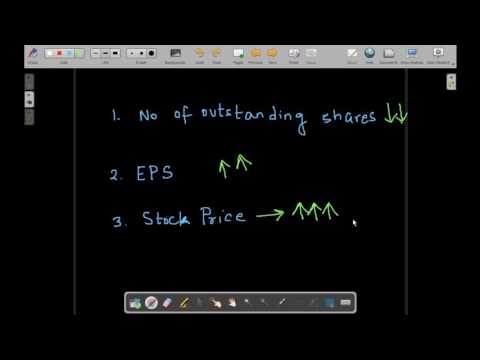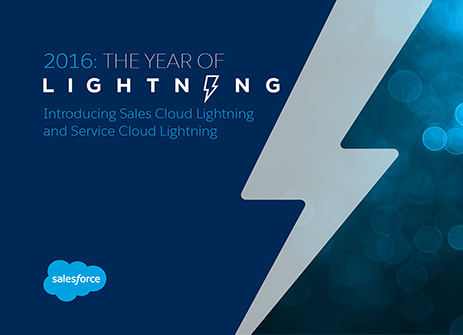

When deflation continues for an extended period in the economy, it gives rise to a recession economy. Here the demand to procure or utilize the goods or services advantages and disadvantages of inflation is greater than the actual availability of the goods and services in the economy. This allows the prices to increase wither-concerning creases in demand.
Plunging prices sound great in theory, but if you’re out of a job and barely have any money, even cheap stuff is going to be too expensive. If you’re not able to save as much as you used to, you may be less prepared for financial emergencies, forcing you to rely on costly credit cards or loans to pay unexpected bills. And if you’re already stretching your budget to the limit, it’s harder to make adjustments to reduce your costs. For instance, if you’re already using the cheapest toilet paper or paper towels on the shelf, you can’t trade down. Those who kept paying their loans had less money to spend on other things. They could not sell their homes for enough to cover the mortgages.

The COVID-19 pandemic in early 2020 led to lockdowns and other restrictive measures that greatly disrupted global supply chains, from factory closures to bottlenecks at maritime ports. At the same time, governments issued stimulus checks and increased unemployment benefits to help blunt the financial impact of these measures on individuals and small businesses. When COVID vaccines became widespread and the economy rapidly bounced back, demand quickly outpaced supply, which still struggled to get back to pre-COVID levels. Built-in inflation (which is sometimes referred to as a wage-price spiral) occurs when workers demand higher wages to keep up with rising living costs.
A moderate rate of inflation indicates that the economy is expanding and growing. It indicates that the economy is targeting to reduce involuntary unemployment. Reducing unemployment can be successful if a moderate inflation rate is maintained.
High inflation can lead to a redistribution of income in society. This is particularly a problem if inflation is high and interest rates low. For example, a relatively higher rate of inflation in Italy can make Italian exports uncompetitive, leading to lower AD, a current account deficit and lower economic growth.
An essential business with low competition and high loyalty will be less affected by rising prices, but any business will have to compensate for rising costs by raising prices, cutting costs or restructuring. Inflation also raises the cost to borrow money and, therefore, to expand a business, but it reduces the cost of existing debt. When prices are rising throughout the entire economy and customers find their money buying less and less, excellent marketing can be a make-or-break proposition.
Advantages and Disadvantages for inflation
Many economists advocate for a middle-ground when it comes to that factor, of around 2% a year. A high level is harmful to savers because it erodes the purchasing power of the money they saved. Nevertheless, it can benefit borrowers because the inflation-adjusted value of their outstanding debts shrinks over time. On the other hand, this could harm importers by making foreign-made goods more expensive. Higher inflation can also encourage spending, as consumers will aim to purchase goods quickly before their prices rise further.
This branch of accounting helps in countering all issues arising from historical cost accounting in times of inflation and hyperinflation. Inflation accounting is a special branch of accounting which is used during inflationary periods for showing the accurate financial status of the company. It is an accounting process which adjusts the company’s financial statements with respect to the current price index for depicting a fair view of the business.
This is attempted through inflation accounting, the following reasons usually being advanced in its favor. Inflation targeting can be hazardous for a country in the long term. The governments may take up too much of the onus or the financial burden of keeping inflation under check. This can lead to higher fiscal deficits, poor welfare policies or stimulus packages and eventually the economy may cease to remain as free flowing as is needed.
- And the inflation doesn’t affect the prices of anyone or two goods and services if it affects them all.
- But for businesses, higher interest rates translate into a higher cost of borrowing for working capital and for investing in the business’s future.
- Similarly, in the case of credit sales, by the time the money is received from the custom, the purchasing power of the same would fall.
- Under this method, the actual movements i.e. rise or fall in the price of a given item is ignored and only changes in the general purchasing power of money is considered.
- If the Eurozone had moderate inflation, it would be easier for southern Europe to adjust and regain competitive without resorting to deflation.
In such a scenario, the purchasing power of the individual declines. This implies that the average price of goods and services has increased. Now the individual can collectively buy less quantity of goods and services at the same price. If people are struggling to save for an extended period of time, it may make it harder to plan to buy a house, save for vacations or send kids to college, says DeCandia.
Disadvantages of Inflation Accounting :
Small businesses cannot afford to implement it in their process. If prices are affordable and predictable, it is easy for consumers to plan how much they can spend, save, or invest in a month, year etc. Many businesses can come out of an inflationary period stronger than when they entered. The Phillips Curve suggests there is a trade-off between inflation and unemployment.

Hence, it is essential to manage financial resources to utilize the best out of inflation as an opportunity and not consider it a challenge for the economy. With limited means, they can only afford limited commodities, and inflation limits them even more. Hence, inflation reduces the limited purchasing power of people who belong to the poor section of the economy.
Does inflation affect all businesses the same?
Remember, inflation occurs when there is more demand than the economy can fulfill. In such times, businesses are likely to hire as many workers as possible as they try to grow to meet demand. This usually happens only when efforts to fight inflation bring about a recession. Current cost accounting is a system of inflation accounting in which each item of financial statements is restated in terms of current value of that item. This method recognises the changes in the prices of individual assets irrespective of the quantum and direction of changes in the general price level.
Causes of Inflation
As such, investors looking to protect their portfolios from inflation should consider inflation-hedged asset classes, such as gold, commodities, and real estate investment trusts . Inflation-indexedbonds are another popular option for investors to profit from inflation. Inflation often leads to speculation by businesses in risky projects and by individuals who invest in company stocks because they expect better returns than inflation. First-time home buyers should pay more for houses – home costs rise, and there are over-the-top premium/contract rates. Banks earn more money as more people can store more in banks, considering the climb in currency value.
A focus on maintaining customer loyalty and flexibility could be a benefit in periods of inflation. At the same time, though, you don’t want your prices to fall too far behind competitors’ so that you maintain the business’s margins and are able to continue investing for the future. As prices rise, people buy less, and this overall effect of dampening consumer demand ripples throughout the economy. But it’s important to note that the effect is not evenly distributed.
When prices are falling, people are reluctant to spend money because they feel that goods will be cheaper in the future; therefore they keep delaying purchases. Also, deflation increases the real value of debt and reduces the disposable income of individuals who are struggling to pay off their debt. When people take on a debt like a mortgage, they generally expect an inflation rate of 2% to help erode the value of debt over time. If this inflation rate of 2% fails to materialise, their debt burden will be greater than expected.
These developments lead to higher costs for the finished product or service and work their way into rising consumer prices. For instance, when the money supply is expanded, it creates a speculative boom in oil prices. This means that the cost of energy can rise and contribute to rising consumer prices, which is reflected in various measures of inflation. Inflation aims to measure the overall impact of price changes for a diversified set of products and services.
Inflation targeting is a monetary policy in which a central bank has an explicit target inflation rate for the medium term and announces this inflation target to the public. It will have price stability as the main goal of monetary policy. As banks raise interest rates to compensate for inflation, consider converting any adjustable-rate debts to fixed loans. As cash devalues, fixed-rate loans will become cheaper in terms of current dollars over time, but the cost of adjustable-rate loans can rise along with inflation.
It is easy to measure the price of changes of individual products over time but human needs extend beyond several products. People need a big as well as diversified set of products, and services for living a comfortable life. They include commodities like food grains, metal, and fuel, utilities like electricity and transportation, etc. The Consumer Price Index For All Urban Consumers measures monthly change in U.S. consumer prices. Too much inflation is generally considered bad for an economy, while too little inflation is also considered harmful. Many economists advocate for a middle ground of low to moderate inflation, of around 2% per year.
Random Glossary term
Depreciation being the process of distribution on original cost over the effective life, charging anything in excess does not fit into the concept of depreciation. Trade unions, employees, shareholders and public are not misled by giving an exaggerated profit figure. The assets are shown at real values uniformly instead of at distorted values as in historical rupee values. This, in turn makes the intra-firm comparison of the financial results of the company more realistic, rational and meaningful.
By using such measures central banks are trying to keep inflation within permissible limits and keep the economy running smoothly. For example, U.S. policymakers tried to keep it steady at around 2% per year. Even though price inflation erodes the value of people’s and businesses’ money, not everything about inflation is cause for panic. At around 2% per year, inflation is considered in the “Goldilocks zone” for strong economic growth without much risk of rising unemployment. One is consumer price index or CPI and the other is wholesale price index or WPI. Every major central bank in the world announces publicly the rate which they are trying to cap the inflation for a given period of time.
Hence, having an expert with full-fledged theoretical knowledge of analytical concepts is essential. With theoretical knowledge, it is possible to perform an efficient financial analysis of the statements. With the help of inflation, accounting analysts and auditors can avoid missing, under-recording, or over-recording financial statements. This helps to analyze and evaluate the actual financial position of the business.

Recent Comments